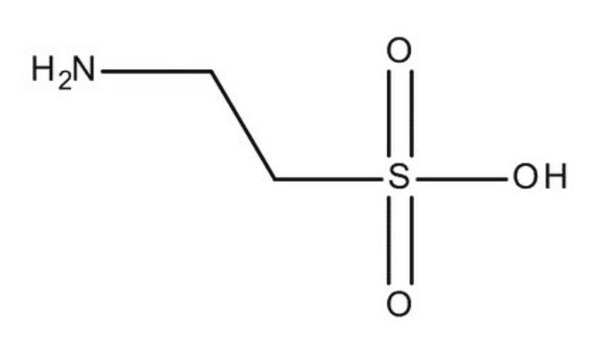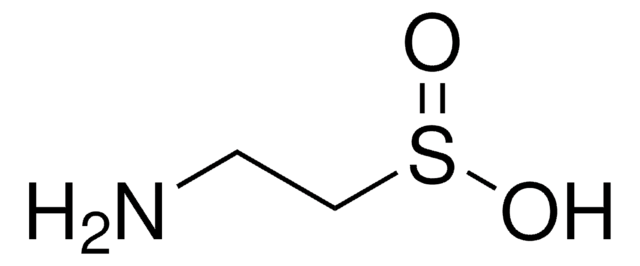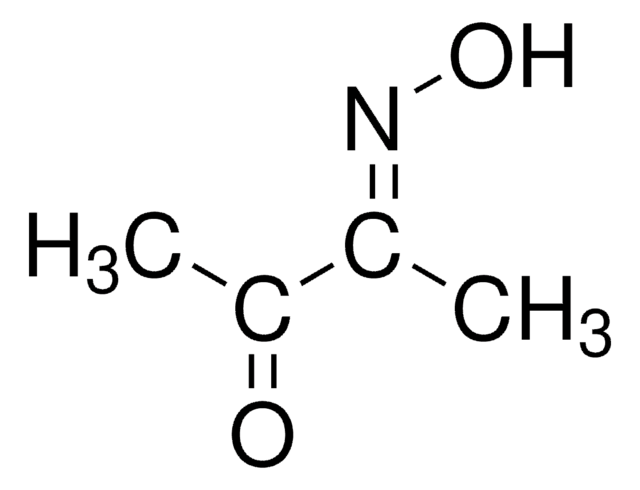W381306
Taurine
≥98%, FG
Sinónimos:
2-Aminoethanesulfonic acid
About This Item
Productos recomendados
origen biológico
synthetic
Nivel de calidad
grado
FG
Halal
Kosher
Agency
meets purity specifications of JECFA
cumplimiento norm.
EU Regulation 1334/2008 & 178/2002
FDA 21 CFR 117
Ensayo
≥98%
mp
>300 °C (lit.)
aplicaciones
flavors and fragrances
Documentación
see Safety & Documentation for available documents
alérgeno alimentario
no known allergens
Organoléptico
odorless
cadena SMILES
NCCS(O)(=O)=O
InChI
1S/C2H7NO3S/c3-1-2-7(4,5)6/h1-3H2,(H,4,5,6)
Clave InChI
XOAAWQZATWQOTB-UHFFFAOYSA-N
¿Está buscando productos similares? Visita Guía de comparación de productos
Descripción general
Aplicación
- Efficacy of taurine-enhanced enteral nutrition in improving the outcomes of critically ill patients: A systematic review and meta-analysis.: This meta-analysis evaluates the effectiveness of taurine-enhanced enteral nutrition in critically ill patients. The results indicate that taurine supplementation significantly improves patient outcomes, including reduced inflammation and enhanced recovery rates (Zhang et al., 2024).
- Taurine reduces the risk for metabolic syndrome: a systematic review and meta-analysis of randomized controlled trials.: This systematic review and meta-analysis demonstrate that taurine supplementation can significantly reduce the risk of metabolic syndrome. The findings support taurine′s potential as a therapeutic agent in managing metabolic health and preventing related diseases (Tzang et al., 2024).
Acciones bioquímicas o fisiológicas
Código de clase de almacenamiento
11 - Combustible Solids
Clase de riesgo para el agua (WGK)
WGK 2
Punto de inflamabilidad (°F)
Not applicable
Punto de inflamabilidad (°C)
Not applicable
Equipo de protección personal
dust mask type N95 (US), Eyeshields, Gloves
Elija entre una de las versiones más recientes:
¿Ya tiene este producto?
Encuentre la documentación para los productos que ha comprado recientemente en la Biblioteca de documentos.
Los clientes también vieron
Nuestro equipo de científicos tiene experiencia en todas las áreas de investigación: Ciencias de la vida, Ciencia de los materiales, Síntesis química, Cromatografía, Analítica y muchas otras.
Póngase en contacto con el Servicio técnico








